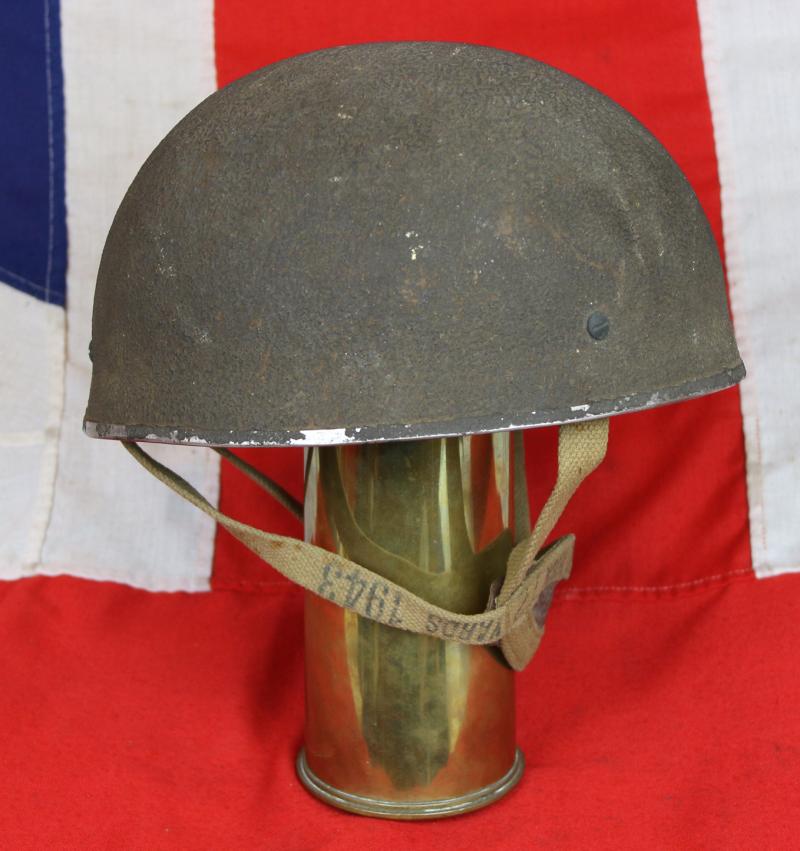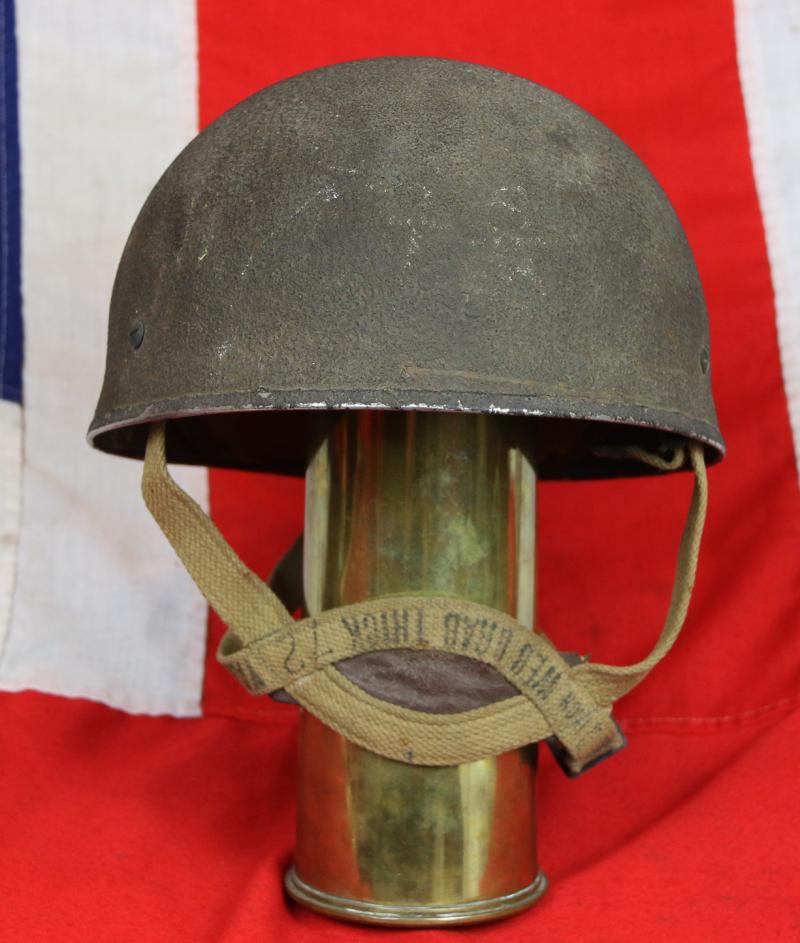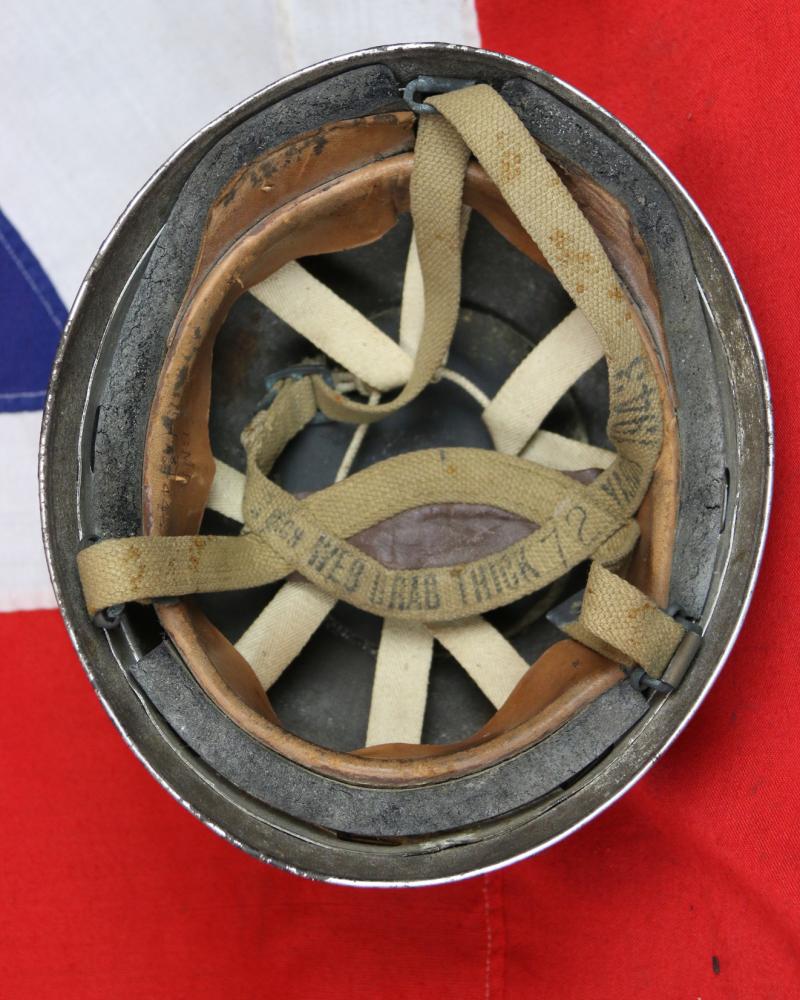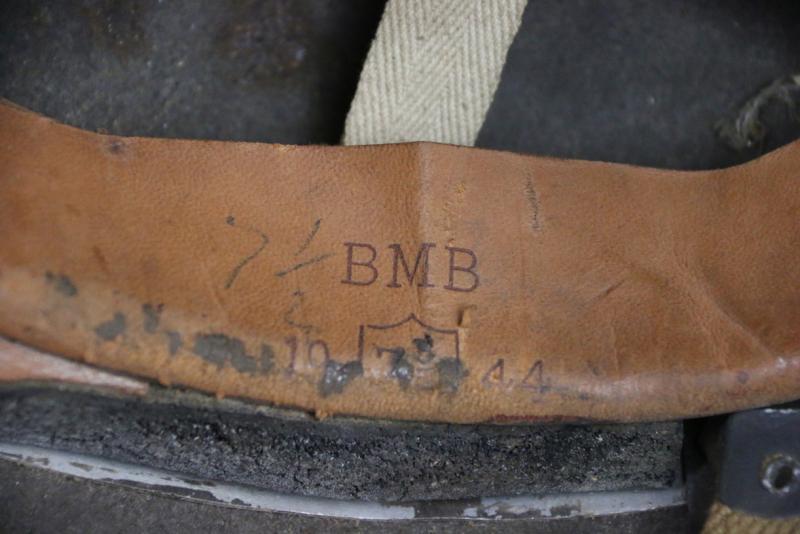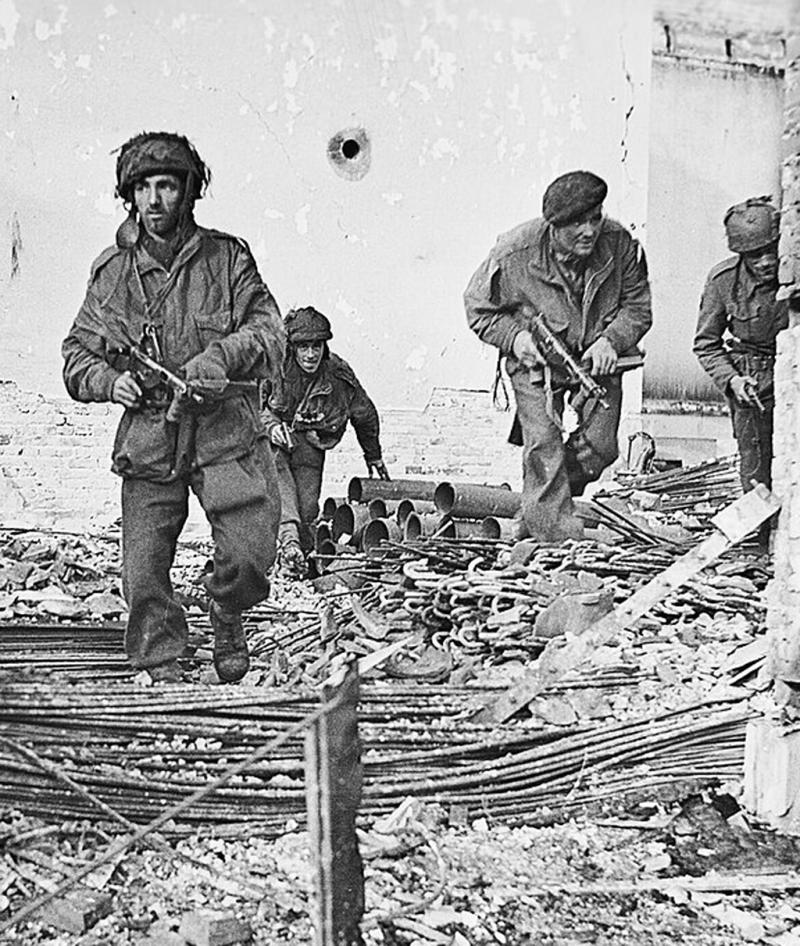An Original and Rare British 1944 Para's {Parachute Regiment} Combat Helmet. Made by Briggs Motor Bodies In 1944 For The Forthcoming Normandy Landings. Used From D-Day, the 6th of June 1944 & September 1944 Operation Market Garden At Arnham
You may have to go a long way and have an even longer wait to find an equally honest example such as this one, in this condition, in fact you may never see a better example.
WW2 British 1944 Dated Paratroopers Steel Combat Helmet, superb example of a classic WW2 British Airborne forces / paratroopers steel combat helmet with subdued combat paint finish to the exterior of the shell. Interior retains the original liner system with brown leather sweatband with BMB stamp and 1944 date. Helmet is complete with its airborne pattern webbing harness chinstrap dated 1943, with leather chin cup. The liner rubbers remain in good condition. Liner is size stamped 7 5/8 dated 1944.
The British Parachute Regiment, nicknamed "The Paras," played a crucial role in the Normandy landings during World War II. They were tasked with securing key bridges, disrupting German communication lines, and neutralizing enemy strongholds before the main amphibious assault on the beaches. Their actions were vital to the success of D-Day.
6th Airborne Division:
The 6th Airborne Division, which included the Parachute Regiment, spearheaded the British airborne assault.
Operation Tonga:
This operation involved the 6th Airborne's initial drop into Normandy, with the primary objective of securing the bridges over the Caen Canal and the River Dives.
Pegasus Bridge:
The 5th Parachute Brigade was specifically tasked with capturing and holding Pegasus Bridge (also known as the Bénouville Bridge), which was a crucial objective.
Merville Battery:
The 9th Parachute Battalion was assigned to neutralize the Merville Gun Battery, a formidable German artillery position threatening the landing beaches.
The Paras' objectives were strategically vital for preventing German reinforcements from reaching the landing zones and for ensuring the overall success of the D-Day landings.
The airborne operation was incredibly challenging, with troops facing strong enemy fire and unpredictable landing conditions. Despite these challenges, the Paras displayed exceptional courage and resilience, achieving their objectives and contributing significantly to the Allied victory.
The actions of the Parachute Regiment in Normandy are remembered with immense respect and gratitude, with annual commemorations taking place to honor their sacrifice and bravery.
Operation Market Garden, a large-scale Allied airborne operation during World War II, involved paratroopers (Paras) and aimed to secure key bridges in the Netherlands, including Arnhem, to create a corridor for a rapid advance into Germany. The operation, though ambitious, ultimately failed to achieve its primary objectives and resulted in heavy casualties.
Operation Market Garden was a plan devised by British Field Marshal Bernard Montgomery to end the war in Europe by Christmas 1944.
It involved a two-part plan: "Market" (airborne landings) and "Garden" (ground advance).
The goal was to seize bridges over the Rhine River, including Arnhem, allowing a ground force to advance into Germany.
The 1st British Airborne Division, including paratroopers, was tasked with capturing the bridge at Arnhem.
The 1st British Airborne Division landed near Arnhem on September 17, 1944, but faced fierce resistance from German forces.
The paratroopers were to hold the bridge for 48 hours until relieved by ground forces.
The ground forces, however, were unable to reach Arnhem in time, and the paratroopers were caught in a prolonged and intense battle.
The airborne forces were dropped too far from the Arnhem bridge, losing the element of surprise.
German forces, including Panzer divisions, were stronger and better prepared than Allied intelligence had anticipated.
Ground forces struggled to advance, leaving the paratroopers isolated and under heavy attack.
The operation was ultimately a costly failure for the
Key points about the paratroopers' involvement:
The 1st British Airborne Division, including various parachute battalions, spearheaded the Arnhem attack.
The 2nd Parachute Battalion notably fought a prolonged and fierce battle at the Arnhem road bridge.
The paratroopers at Arnhem faced immense challenges and ultimately suffered heavy losses.
Overall a very good example of an original classic paratrooper steel helmet, used by one of the heroic paras from Normandy and to the close of WW2. It has been in storage for around 40 years, so its condition is exceptional.
Every single item from The Lanes Armoury is accompanied by our unique Certificate of Authenticity. Part of our continued dedication to maintain the standards forged by us over the past 100 years of our family’s trading
Code: 25884
1995.00 GBP

